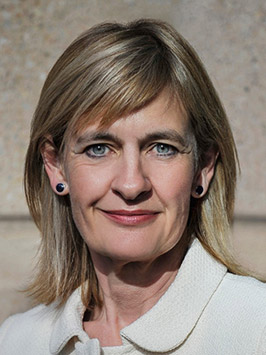NDIS property investment risky but rewarding
Investors seeking potentially high returns from disability accommodation should be wary of overhyped schemes that could backfire badly, ASIC's Deputy Chair Sarah Court told API Magazine.
Mum and Dad investors are the target audience for an emerging sector of investment firms promoting great returns on properties built to house recipients of NDIS Specialty Disability Accommodation (SDA) funds.
Typical ‘hooks’ include huge returns, secure government funding and the investment bestowing a charitable aspect, but the Australian Securities and Investments Commission (ASIC) Deputy Chair Sarah Court warns investors should exercise due diligence and caution when considering this type of investment.

Sarah Court, Deputy Chair, Australian Securities and Investments Commission
“People should always do their due diligence and be very sceptical about anything promoted as ‘government-backed’ or providing ‘guaranteed’ or ‘secure’ returns,” Ms Court told Australian Property Investor Magazine.
“As we understand, any government funding is attached to the NDIS participant, and not the property itself.”
According to the NDIS, SDA funding is provided for participants who meet strict eligibility criteria, which includes having an extreme functional impairment and/or very high support needs.
“SDA housing investment is a developing area and it can be structured in different ways.
“It is easy for people to be lured into investing in new opportunities.
“Investors should be aware that investment schemes, generally, are not government-backed and are run independently from government, so they should exercise caution if investments are based on these promises,” Ms Court said.
Need for NDIS property exploding
The top provider in Australia to participants receiving SDA (by payment volumes) is a not-for-profit company called Home4Life which has completed 66 homes in Wagga Wagga, Dubbo and Ballina, the Hunter region and Central Coast of New South Wales.
Post-build, their focus is on maintenance and ensuring the properties remain fit-for-purpose as residents’ needs change.
Home4Life was recently successful in tendering for the Hunter Residences Program, an initiative of the NSW Department of Communities and Justice, which involves the design, construction, delivery and operation of SDA registered under the NDIS.

Nicholas Logan-Alessio, Director and Group Head of Acquisitions, Apollo Investment
While the total payments Home4Life has managed for SDA supports in the last three years are $6 million, $13 million and $15 million respectively, the eye-watering amounts are not indicative of a cash splash but reflect the increasing demand.
When the NDIS first established in 2013, there were just under 8,000 people seeking support, today there is 550,000; of which 22,479 nationwide, have a need for speciality disability accommodation.
“With so many people needing NDIS properties, they are now one of the most sought-after forms of property investment because of their social benefits and investment returns,” Nicholas Logan-Alessio, Group Head of Acquisitions and Director of Apollo Investment, said.
“In my view, NDIS housing is providing a once in a lifetime opportunity for mum and dad investors to create generational wealth.”
While Apollo Investment Acquisition Group claims there are more than 45,000 people with a disability looking for accommodation and not enough properties to meet their needs, NDIS data suggests fewer people are currently in need, given the strict criteria of eligibility to receive SDA funds showed a growing need for SDA across the country.
NDIS investment opportunities abound but be wary
“NDIS properties do not often come up for sale which is why one of the most effective ways to purchase one is to build one, however, it is also possible to purchase one that is in the process of being built,” Mr Logan-Alessio said.
“My strong advice is to partner with an organisation that is experienced in helping people to build their own NDIS property.
“By doing this, you will not only get the help you need to find the most appropriate location, purchase the best piece of land and secure the most skilled builder, you will also be provided with the guidance and advice necessary to minimise stress and ensure the turnkey project is a success.
“While there is strong demand for NDIS property all over the country, there are certainly areas to be avoided that have been oversaturated by developers, builders and investor groups chasing a quick ‘buck’.
Selecting the right area must be done in conjunction with the people at the “coalface”, participants, Supported Independent Living (SIL) and SDA managers, Mr Logan-Alessio said.
“Beware that some companies in this sector claim to work hand-in-hand with builders and developers that work off stock lists.
“The end result is that because these houses were not built with the NDIS tenants’ needs in mind, they don’t meet their needs and the house can remain untenanted, which ends up squandering away their investors’ money,” he said.
ASIC’s Ms Court also warned direct investment in property is not a financial product and is not regulated by ASIC.
“That means many of the consumer safeguards that apply to financial products do not exist for direct property investment.
“While ASIC does not generally regulate direct property investment, we do want to support people to make informed financial decisions and avoid them being lured into investing on the back of false or misleading claims.
“We strongly encourage people to get independent financial advice, that is, advice from someone not linked to the property developer or promoter, before making any investment,” Ms Court said.
NDIS numbers rising exponentially
The most recent NDIS quarterly report to disability ministers showed active participants with SDA supports have increased by 15 per cent annually over the last three years, reaching 20,920 as of 30 September 2022, and 22,479 by November 2022.
“The average plan budgets for SDA supports have also increased by around 11 per cent per annum, leading to an increase in total SDA supports in participant plans by around 28 per cent per annum, from $144 million in September 2019 to $306 million as of 30 September 2022,” the report states.
“Total SDA payments have increased by 45 per cent annually over the last three years, from $67 million to $205 million, while the average SDA payments per participant have also increased, by 24 per cent per annum.”
The total number of enrolled SDA dwellings on 30 September 2022 was 7,334, up by 28 per cent annually over the last three years, and by 773 dwellings (12 per cent), compared to a year ago at 30 September 2021.

This increase was observed across all design categories, except for Basic stock, which saw a two per cent reduction (48 dwellings).
The largest relative increase was for dwellings of the High Physical Support category (35 per cent, 514 dwellings), followed by dwellings of the Robust design category (35 per cent, 137 dwellings). All states and territories excluding Western Australia, Tasmania and Northern Territory saw increases in enrolled dwellings.
By October there were 3,419 participants in an SDA dwelling seeking an alternative dwelling and an additional 1,559 participants who were not in an SDA dwelling seeking a vacancy. Of the combined 4,978 participants seeking SDA dwellings, 1,674 (34 per cent) were for the Improved Liveability design category and 1,347 (27 per cent) were for High Physical Support.
A review of SDA pricing was launched in 2022 that evaluates the impact of current SDA prices on supply and demand and set new SDA prices to guide market investment to areas that will most benefit people with disability that need SDA housing over the next five years.




















